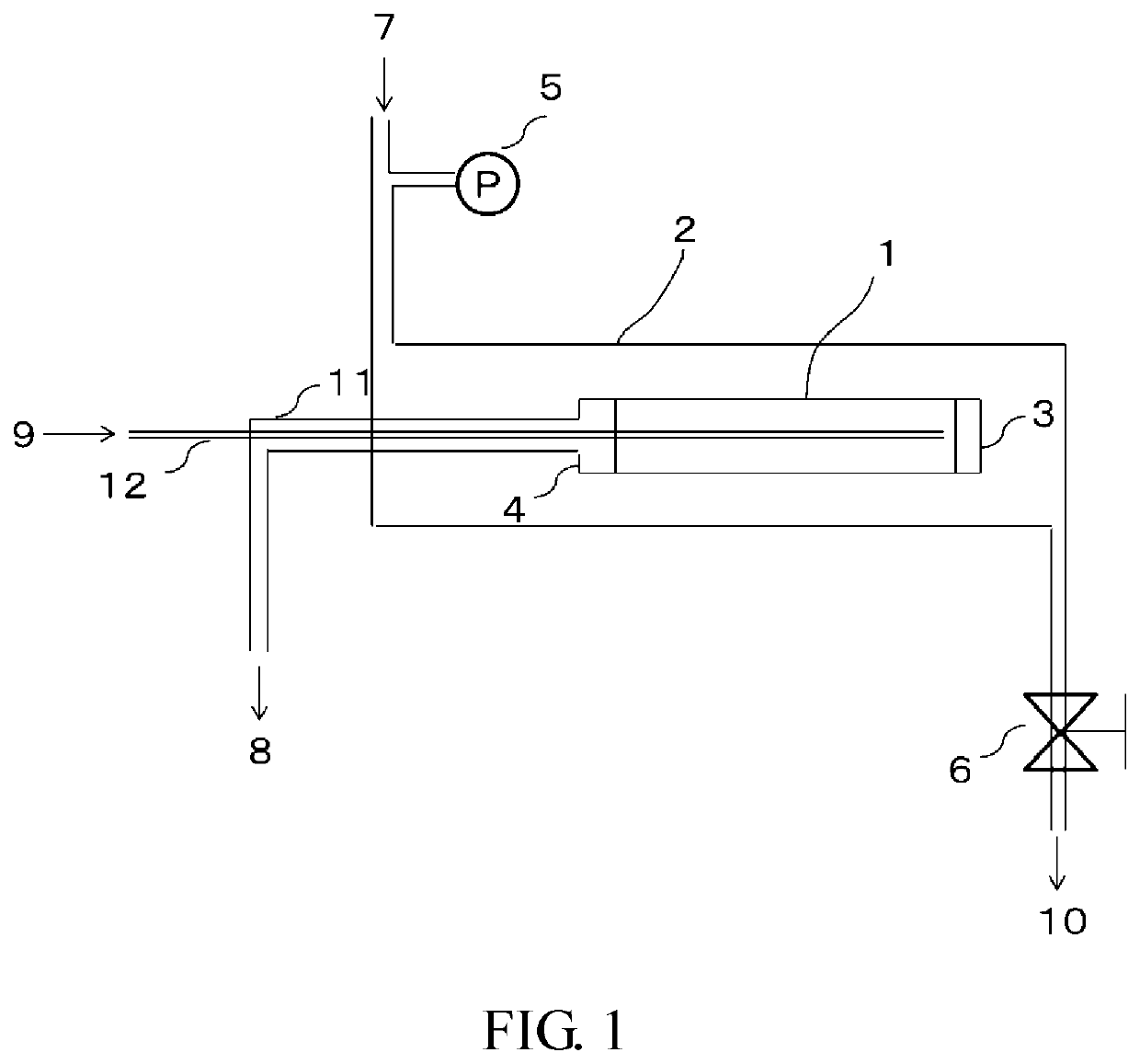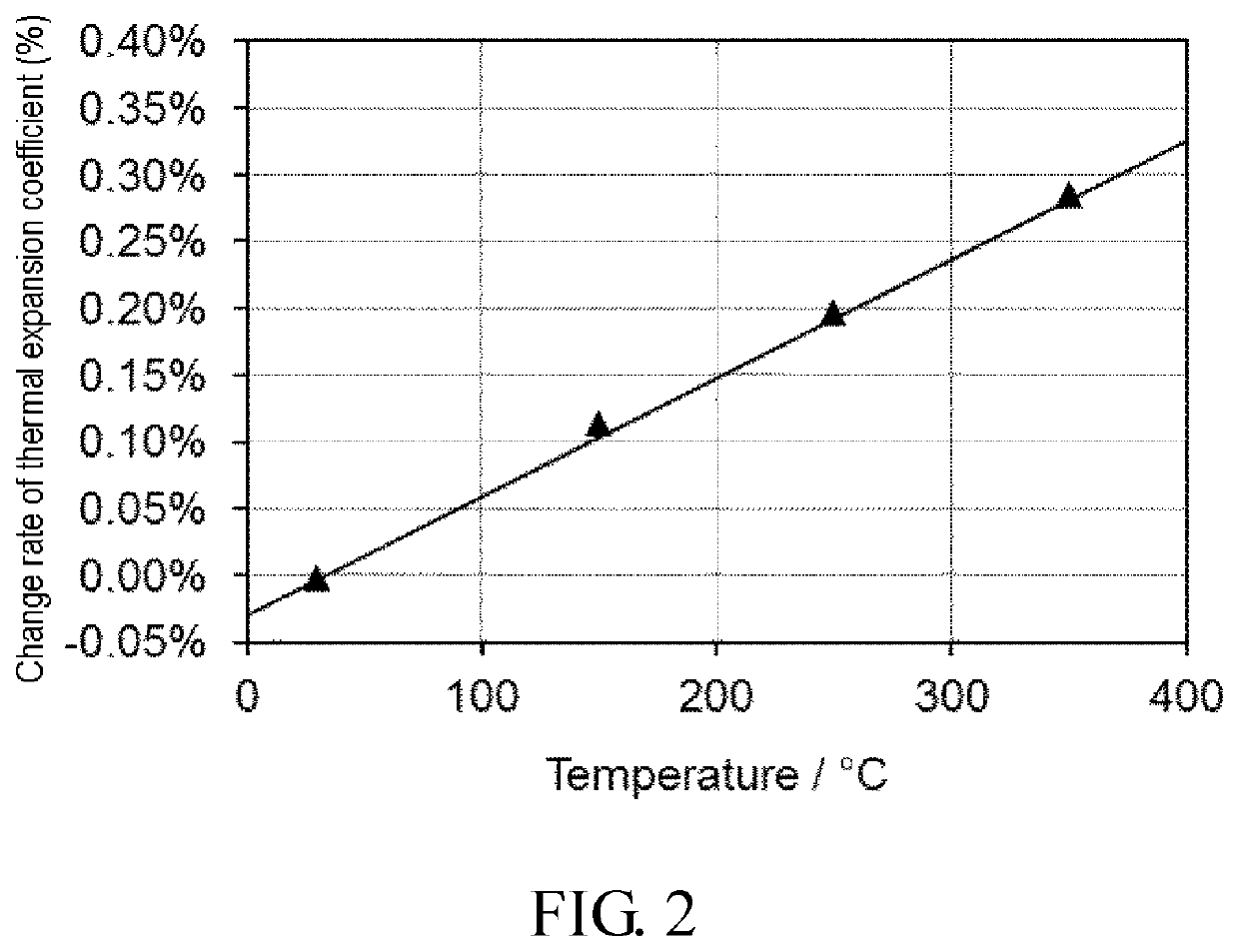Ammonia separation method and zeolite
a technology of ammonia and separation method, which is applied in the field of ammonia separation method and zeolite, can solve the problems of low heat resistance of polymer membrane, low heat resistance of membrane, and easy swelling of polymer membrane, and achieve high ammonia gas permeability, high selectivity, and use stably
- Summary
- Abstract
- Description
- Claims
- Application Information
AI Technical Summary
Benefits of technology
Problems solved by technology
Method used
Image
Examples
examples
[0302]Hereinafter, although the present invention is described more specifically based on Examples, the present invention is not limited by the following Examples without departing from the scope of the invention. The values of various production conditions and evaluation results in the following Examples have meanings as preferable values of the upper limit or the lower limit in an embodiment of the present invention, and a preferred range may be a range defined by a combination of the above-described upper limit or lower limit value and a value of the following Examples or a combination of values of Examples.
[0303]In the following, “CHA silicate zeolite” is simply called “CHA zeolite”, “RHO silicate zeolite” is simply called “RHO zeolite”, and “MFI silicate zeolite” is simply called “MFI zeolite”
example a
[Measurement of Separation Performance]
[0304]In the following, the separation performance of a zeolite membrane composite was measured as follows.
(1) Ammonia Separation Test
[0305]In an apparatus schematically shown in FIG. 1, an ammonia separation test was performed as follows. In the apparatus of FIG. 1, a mixed gas containing ammonia gas (NH3), nitrogen gas (N2), and hydrogen (H2) was supplied as a supply gas at a flow rate of 100 SCCM between a pressure vessel and a zeolite membrane composite, a back pressure valve was adjusted in such a manner that the pressure difference between gas on the supply side and gas permeated through a membrane was constant at 0.3 MPa, an exhaust gas discharged from a pipe 10 was analyzed with a micro gas chromatograph, and the concentration and flow rate of the permeated gas were calculated.
[0306]In an ammonia separation test, in order to remove components such as moisture and air from a pressure vessel, after purging with a sample gas to be used for...
production example a1
lite Membrane Composite 1
[0309]A CHA zeolite membrane composite 1 was produced by the following method.
(Raw Material Mixture for Hydrothermal Synthesis)
[0310]First, a raw material mixture for hydrothermal synthesis was prepared as follows.
[0311]To a mixture of 1.45 g of 1 mol / L-NaOH aqueous solution, 5.78 g of 1 mol / L-KOH aqueous solution, and 114.6 g of water, 0.19 g of aluminum hydroxide (containing Al2O3-53.5% by mass, manufactured by Aldrich Co., Ltd.) was added and dissolved by stirring to obtain a transparent solution. To this, 2.43 g of a 25% by mass aqueous solution of TMADAOH was added as an organic template, and then 10.85 g of colloidal silica (Snowtech-40, manufactured by Nissan Chemical Co., Ltd.) was added and stirred for 2 hours to obtain a raw material mixture for hydrothermal synthesis. The composition (molar ratio) of this mixture was SiO2 / Al2O3 / NaOH / KOH / H2O / TMADAOH=1 / 0.018 / 0.02 / 0.08 / 100 / 0.04, SiO2 / Al2O3=58.
(Support)
[0312]As a porous support, an alumina tube BN1 (o...
PUM
 Login to View More
Login to View More Abstract
Description
Claims
Application Information
 Login to View More
Login to View More - R&D
- Intellectual Property
- Life Sciences
- Materials
- Tech Scout
- Unparalleled Data Quality
- Higher Quality Content
- 60% Fewer Hallucinations
Browse by: Latest US Patents, China's latest patents, Technical Efficacy Thesaurus, Application Domain, Technology Topic, Popular Technical Reports.
© 2025 PatSnap. All rights reserved.Legal|Privacy policy|Modern Slavery Act Transparency Statement|Sitemap|About US| Contact US: help@patsnap.com


